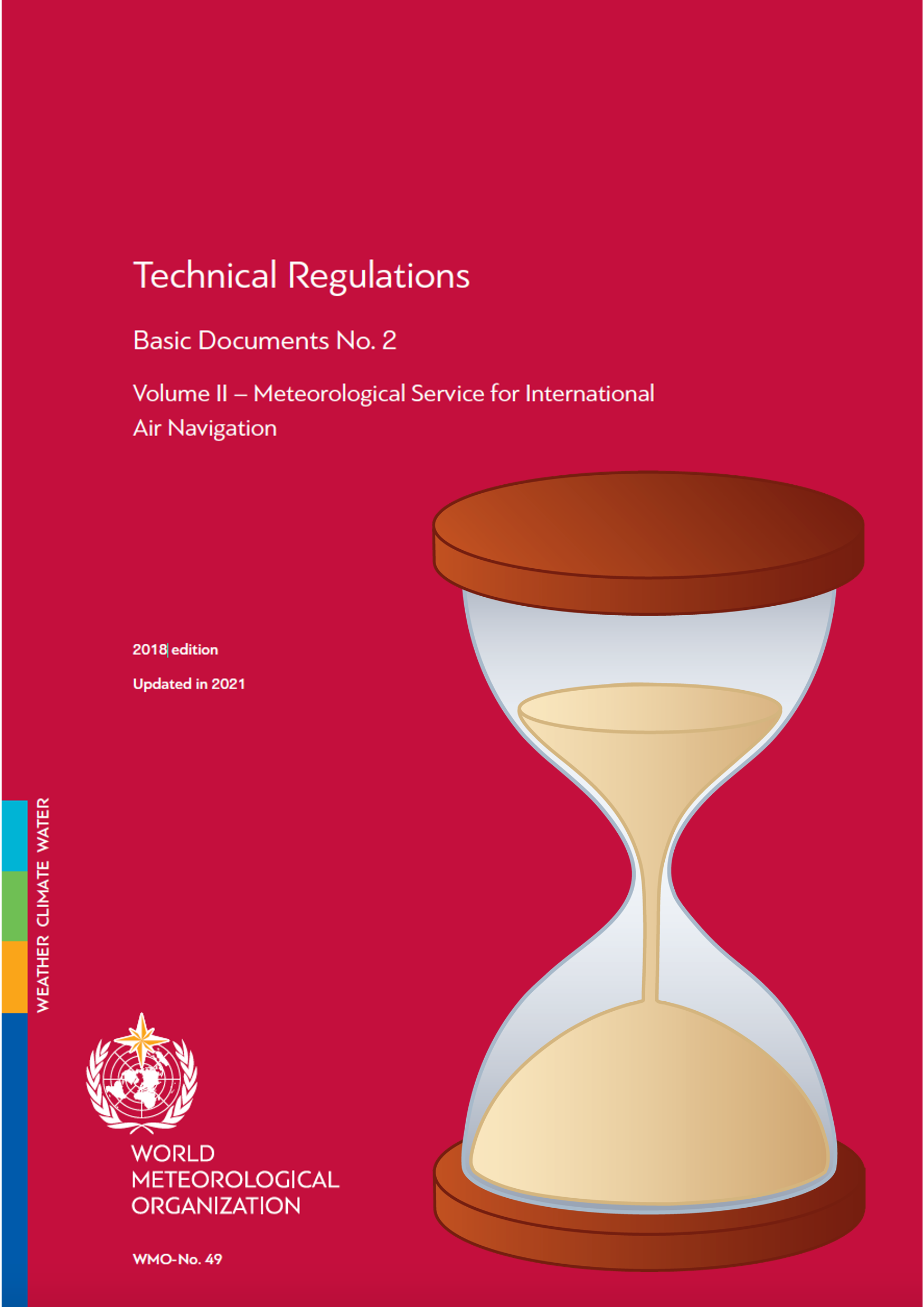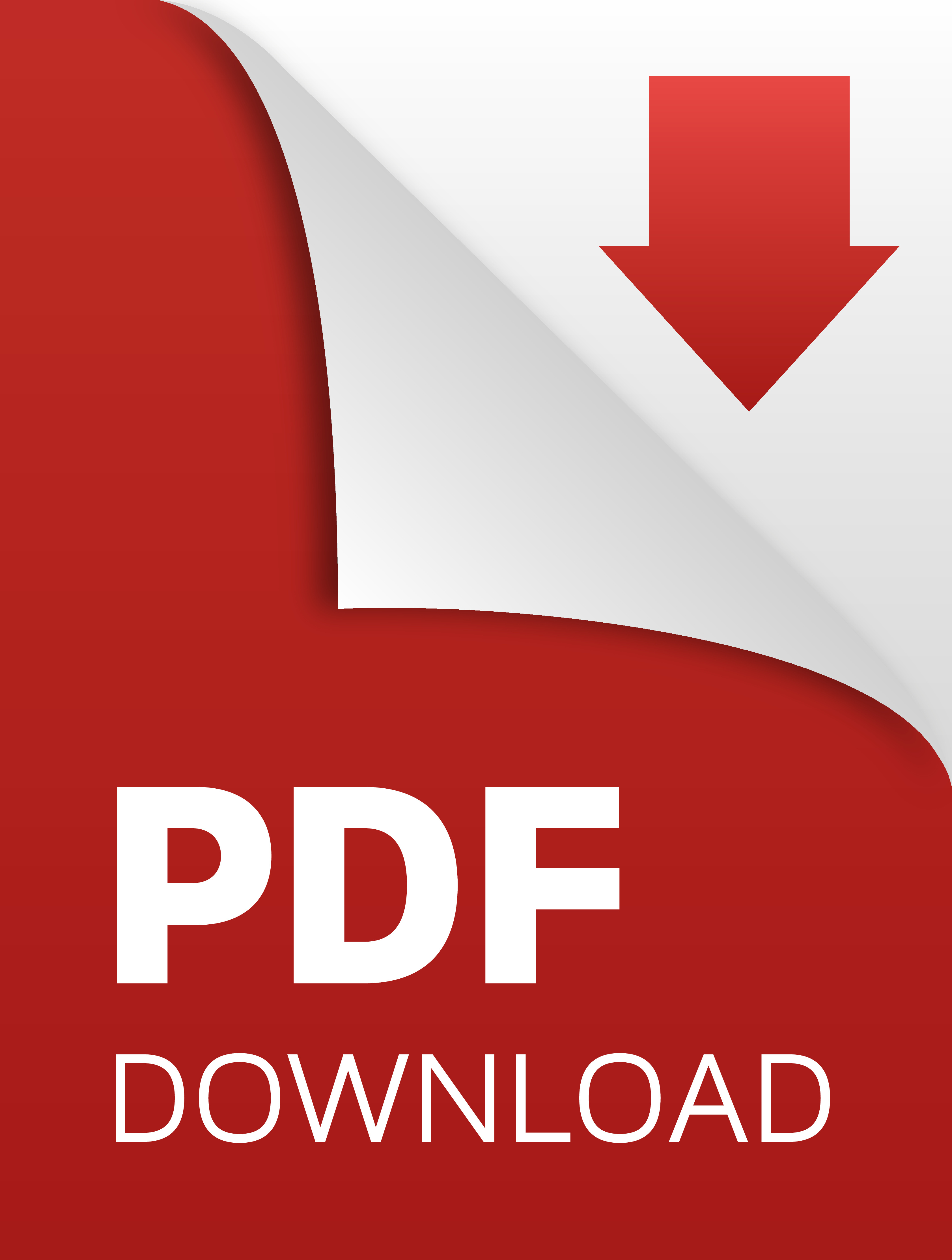Frequently Asked Questions (FAQs) on the Discontinuation of Technical Regulations (WMO-No. 49), Volume II, Meteorological Service for International Air Navigation
Frequently Asked Questions (FAQs)on theTwo-stage discontinuation of the Technical Regulations (WMO-No. 49), Volume II, Meteorological Service for International Air Navigation |
 |
Last updated: 21 July 2023
The following provides responses to typical, frequently asked questions (FAQs) pertaining to the discontinuation of the Technical Regulations (WMO-No. 49), Volume II, Meteorological Service for International Air Navigation.
| To download a PDF copy of the FAQs please click on the icon to the right → | 
|
If you have a question that is not covered by the FAQs please send an email to the WMO Secretariat (aviation@wmo.int).
If you want to return to the main page, please click here.
Jump to FAQ number:
Discontinuation - Why? What? When?
- Q1: After decades of its existence, why was it considered at this time to be appropriate to discontinue the issuance of WMO-No 49, Volume II?
- Q2: What is the timeframe for the discontinuation of WMO-No. 49, Volume II?
- Q3: As a WMO Member, can I object to the discontinuation of WMO-No. 49, Volume II or has the decision already been made?
- Q4: Does this discontinuation imply that Technical Regulations related to aeronautical meteorology are no longer required or that their importance is lessened?
Future access to Standards and Recommended Practices
- Q5: Where can the Standards and Recommended Practices governing meteorological service for international air navigation be found after the discontinuation of WMO-No. 49, Volume II and how can they be accessed?
- Q6: As a national meteorological and hydrological service (NMHS) we often struggle to engage with, or to maintain, relations with our national civil aviation authority (CAA), which can hamper or inhibit access to ICAO publications. What can we do?
WMO’s future role
- Q7: Will WMO be involved in the review/approval/adoption process of the international Standards and Recommended Practices related to aeronautical meteorology as hitherto?
- Q8: Does this discontinuation have an impact on the influence of WMO Members on the development of new or updated Standards and Recommended Practices governing meteorological service for international air navigation?
Impact of discontinuation on other regulations
- Q9: As a WMO Member, will our national rules, regulations and/or legislation have to change to accommodate the discontinuation of WMO-No. 49, Volume II?
- Q10: Will other WMO technical regulations and supporting guidance material be updated to accommodate the discontinuation of WMO-No. 49, Volume II and, if so, when?
Discontinuation - Why? What? When?
|
QUESTION 1: After decades of its existence, why was it considered at this time to be appropriate to discontinue the issuance of WMO-No 49, Volume II? |
|---|
|
Answer 1: Repeating the provisions, mutatis mutandis, of ICAO Annex 3 – Meteorological Service for International Air Navigation creates an unnecessary redundancy. An additional difficulty stems from the fact that the issuance of amendments to WMO-No. 49, Volume II has not been simultaneous with that to ICAO Annex 3, which has resulted in discrepancies between the two documents. The existence of such differences is contrary to the principles of a quality management system and should therefore be eliminated. Furthermore, maintaining WMO-No. 49, Volume II is often time consuming and costly for the WMO Secretariat. The problem of the non-simultaneous issuance of amendments to ICAO Annex 3 and WMO-No. 49, Volume II could potentially have been resolved by amending the Working Arrangements Between ICAO and WMO (ICAO Doc 7475). However, the planned issuance of a new ICAO document, ICAO Procedures for Air Navigation Services – Meteorology (PANS-MET, Doc 10157) (foreseen for 2024) would have created a further complication, resulting in a substantial amount of editorial work, with no benefit for WMO Members. |
|
QUESTION 2: What is the timeframe for the discontinuation of WMO-No. 49, Volume II? |
|---|
|
Answer 2: The discontinuation will happen in two stages. Part I, Core Standards and Recommended Practices and Part II, Appendices and Attachments will be discontinued with effect 31 December 2023. Meanwhile, Part III, Aeronautical Climatology and Part IV, Format and Preparation of Flight Documentation will be discontinued (provisionally) in 2026 once any material of continuing relevance has been transferred to ICAO PANS-MET. |
|
QUESTION 3: As a WMO Member, can I object to the discontinuation of WMO-No. 49, Volume II or has the decision already been made? |
|---|
|
Answer 3: The decision to discontinue WMO-No. 49, Volume II was recommended by the sixteenth session of the Commission for Aeronautical Meteorology (CAeM-16) in 2018 and approved by the eighteenth World Meteorological Congress (Cg-18) in 2019. The corresponding plan of action was endorsed by the second session of the Services Commission (SERCOM-2) in 2022 and approved by the nineteenth World Meteorological Congress (Cg-19) in 2023. It is therefore too late to object to or to reverse these decisions. |
|
QUESTION 4: Does this discontinuation imply that Technical Regulations related to aeronautical meteorology are no longer required or that their importance is lessened? |
|---|
|
Answer 4: No. Although the issuance of WMO-No. 49, Volume II will be discontinued, Standards and Recommended Practices (SARPs) pertaining to the provision of meteorological service for international air navigation continue to be essential, ensuring their required quality and uniform application worldwide. These SARPs will prevail in ICAO Annex 3 and (from 2024) ICAO PANS-MET (Doc 10157). ICAO maintains Annex 3 and (future) PANS-MET as well as supporting technical guidance material in close coordination with WMO. |
Future access to Standards and Recommended Practices
|
QUESTION 5: Where can the Standards and Recommended Practices (SARPs) governing meteorological service for international air navigation be found after the discontinuation of WMO-No. 49, Volume II and how can they be accessed? |
|---|
|
Answer 5: The SARPs will be contained in two documents: in ICAO Annex 3 and in ICAO PANS-MET (Doc 10157). ICAO Annex 3 includes the fundamental and fairly stable aeronautical requirements, principally addressed to the Contracting State and its Meteorological Authority, while the technical specifications and procedures are contained in ICAO PANS-MET (Doc 10157), which is mainly addressed to the aeronautical Meteorological Service Provider(s). Free, online access to ICAO Annex 3 and, when available, the ICAO PANS-MET is via an electronic library (https://elibrary.icao.int/) kindly hosted by ICAO. In the WMO e-library, current technical regulations may continue to be available; however, they will be flagged with a disclaimer that they are no longer updated and should therefore not be used for operational or legal purposes. |
|
QUESTION 6: As a national meteorological and hydrological service (NMHS) we often struggle to engage with or to maintain relations with our national civil aviation authority (CAA), which can hamper or inhibit access to ICAO publications. What can we do? |
|---|
|
Answer 6: The situation facing your NMHS is not unique since other NMHSs sometimes face the same challenges. International organizations such as WMO and ICAO, including through their respective regional offices, can offer support to establish or renew engagement between the NMHS, the CAA and others concerned (e.g. the air navigation service providers). In addition, it can sometimes prove beneficial to liaise with other NMHSs in the region who may have encountered and overcome similar challenges in the past, to learn from shared experiences and strategies that have worked. |
WMO’s future role
|
QUESTION 7: Will WMO be involved in the review/approval/adoption process of the international Standards and Recommended Practices (SARPs) related to aeronautical meteorology as hitherto? |
|---|
|
Answer 7: The international SARPs will be subject to the review/approval/adoption process established by ICAO. However, WMO will continue to be fully involved in the process as explained under Question 8. |
|
QUESTION 8: Does this discontinuation have an impact on the influence of WMO Members on the development of new or updated Standards and Recommended Practices governing meteorological service for international air navigation? |
|---|
|
Answer 8: No. Standards and Recommended Practices have always been developed by ICAO in close coordination with WMO. The role of WMO will remain unchanged and central in this process, even after the discontinuation of the issuance of WMO-No. 49, Volume II by WMO. |
Impact of discontinuation on other regulations
|
QUESTION 9: As a WMO Member, will our national rules, regulations and/or legislation have to change to accommodate the discontinuation of WMO-No. 49, Volume II? |
|---|
|
Answer 9: National rules, regulations and/or legislation may have to be updated or otherwise amended. In most instances this may simply entail changing references from WMO-No. 49, Volume II to ICAO Annex 3 and/or ICAO PANS-MET (Doc 10157). The WMO Member will need to determine, for itself, if, where and how its regulatory framework needs to be updated. |
|
QUESTION 10: Will other WMO technical regulations and supporting guidance material be updated to accommodate the discontinuation of WMO-No. 49, Volume II and, if so, when? |
|---|
|
Answer 10: Yes. Other WMO technical regulations and guidance material that cross-reference WMO-No. 49, Volume II will have to be updated as a consequence of the discontinuation. WMO intends to introduce these consequential amendments at the earliest opportunity, for example the next time each affected publication is amended or updated. The completion of this process could, however, take several years to complete owing to the nature and number of publications involved. |
CLICK HERE to return to the main page
CLICK HERE to return to our homepage
